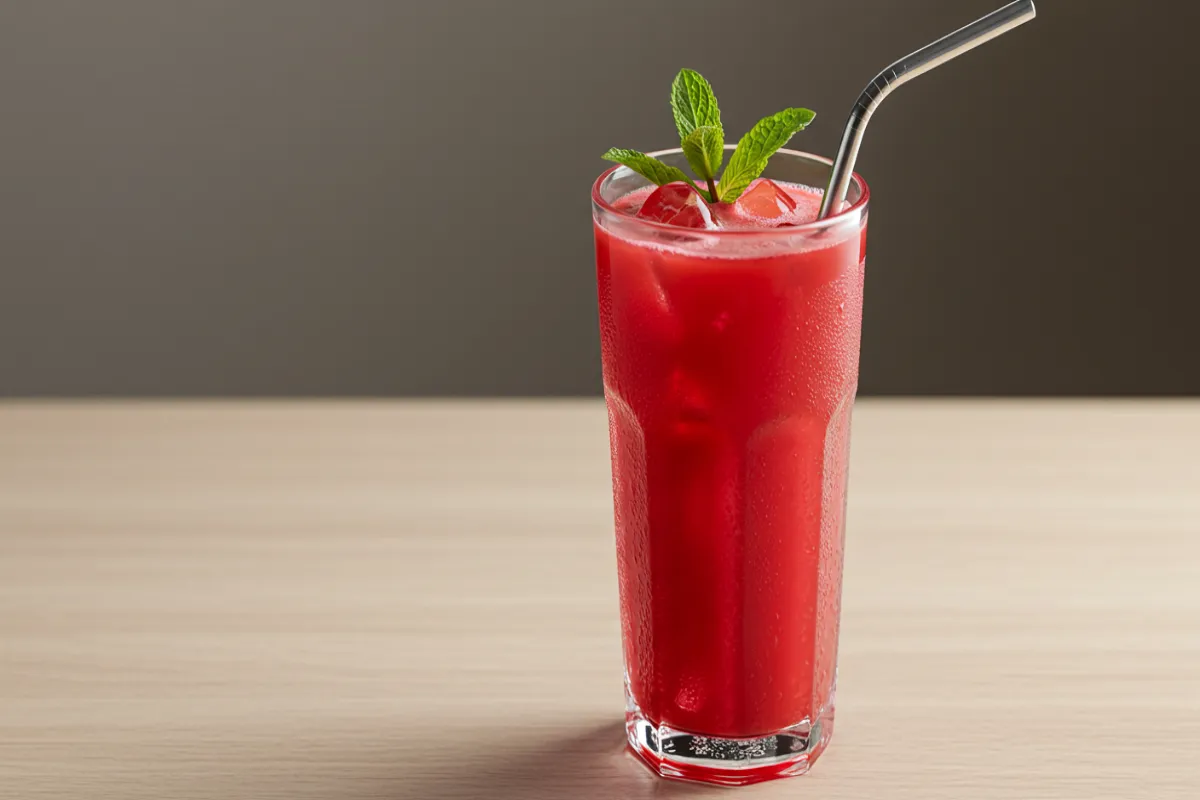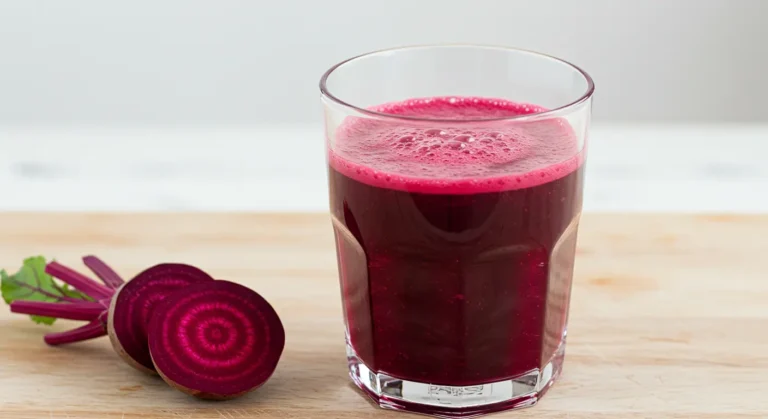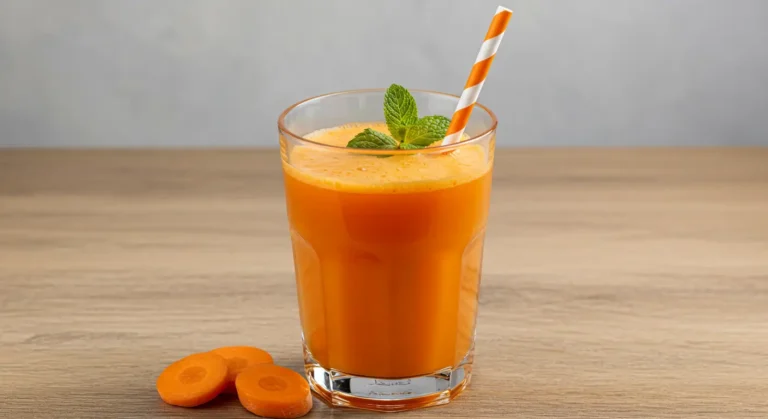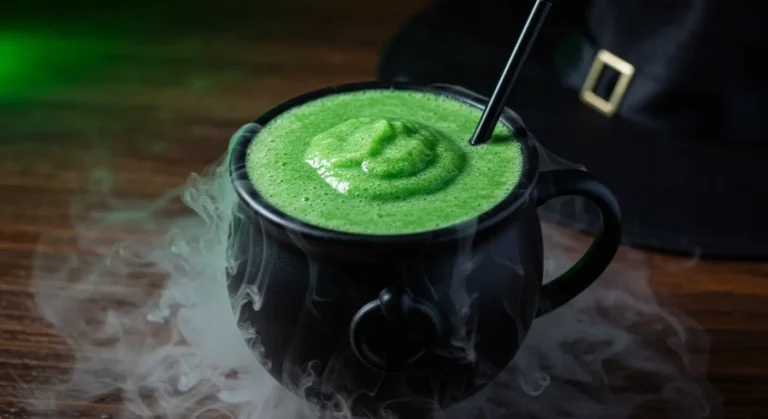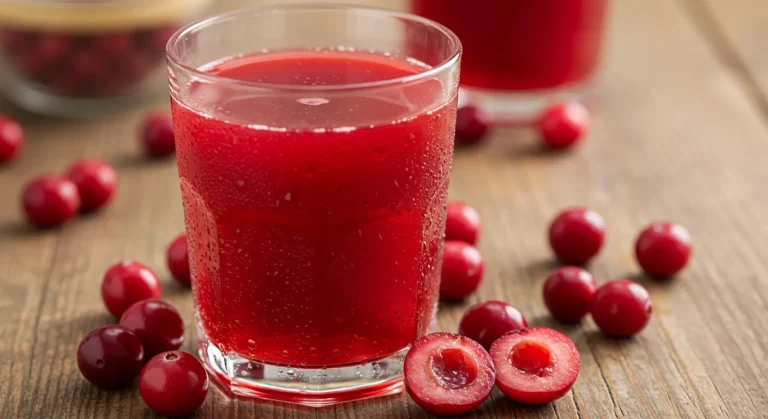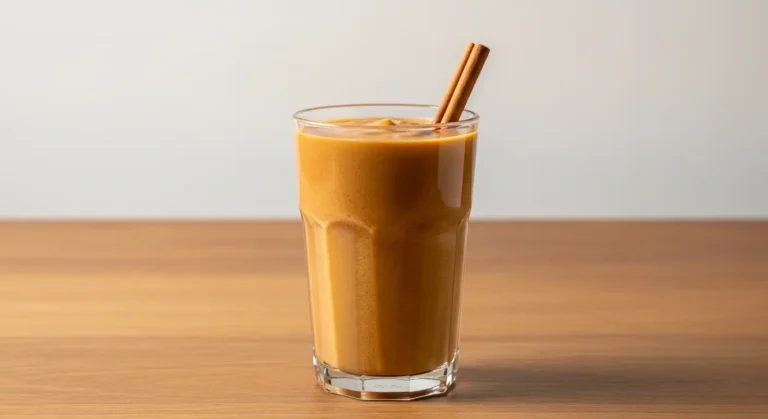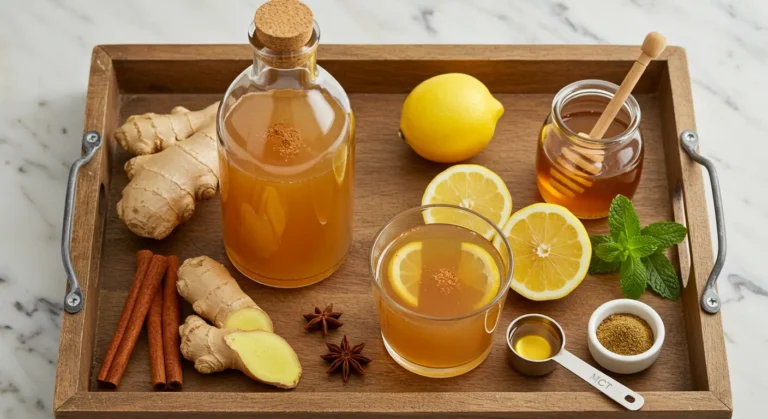Carrot Beet Juice: A Simple Sip of Strength
Nearly 70% of Americans fail to consume the recommended daily servings of vegetables, missing out on essential nutrients that could transform their health. What if a single glass of vibrant carrot beet juice could deliver a concentrated dose of these vital nutrients in just minutes? This refreshing blend doesn’t just offer stunning color—it provides a remarkable combination of antioxidants, vitamins, and minerals that support everything from eye health to immune function. Carrot beet juice stands out as one of nature’s most powerful nutritional packages, delivering maximum benefits with minimal effort.
Table of Contents
Ingredients List
For this revitalizing carrot beet juice, you’ll need:
- 3 medium-sized carrots (approximately 180g) – washed, peeled, and chopped
- 1 medium beet (approximately 150g) – washed, peeled, and chopped
- 1-inch piece of fresh ginger – peeled
- 1/2 lemon – juiced
- 1 apple (preferably sweet varieties like Fuji or Gala) – cored and chopped
- 1/4 teaspoon ground turmeric (optional)
- Small handful of fresh mint leaves (optional)
- Ice cubes (for serving)
- 1/2 cup water (if needed for desired consistency)
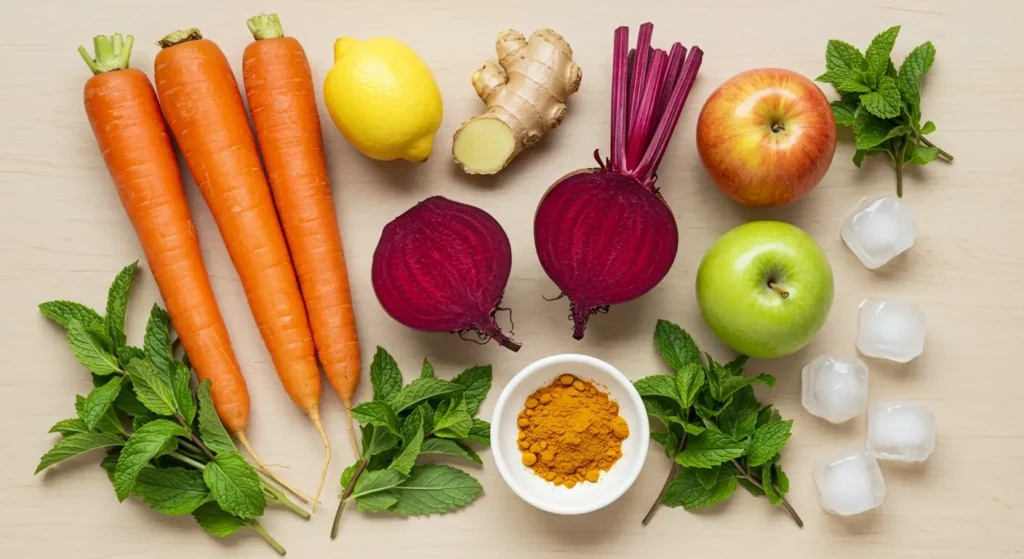
Possible Substitutions:
- Replace apple with 1 medium orange for a more citrusy profile
- Swap fresh turmeric root for ground turmeric (use a 1-inch piece)
- Substitute spinach or kale for added greens (1 cup loosely packed)
- Replace lemon with lime for a different tangy note
- Use cucumber instead of apple for a less sweet, more refreshing juice
Timing
- Preparation Time: 10 minutes (includes washing and chopping ingredients)
- Juicing Time: 5 minutes
- Total Time: 15 minutes—that’s 75% faster than many other nutrient-dense breakfast options while providing comparable nutritional benefits.
Step-by-Step Instructions
Step 1: Prepare Your Ingredients
Thoroughly wash all produce, even items you’ll be peeling. Remove the tops from the carrots and beets, then peel them using a vegetable peeler. Chop the carrots, beets, and apple into chunks that will fit through your juicer chute. Pro tip: The smaller your chunks, the easier it will be for your juicer to process them without straining the motor.
Step 2: Prepare Your Juicer
Assemble your juicer according to the manufacturer’s instructions. Place a container under the juice spout to collect your fresh carrot beet juice. Before you begin, ensure the pulp container is empty and properly positioned to catch the discarded fiber.
Step 3: Juice Your Ingredients
Feed the prepared ingredients through the juicer chute, alternating between different items for optimal juice extraction. Start with softer ingredients like apple, followed by carrots, then ginger, and finally beets. This sequence helps push the maximum amount of juice from each ingredient. If you’re using leafy greens as a substitution, roll them into tight bundles before feeding them through.
Step 4: Add Final Touches
Once all ingredients have been juiced, stir in the lemon juice, ground turmeric (if using), and any other additional spices. This post-juicing addition preserves the integrity of these sensitive ingredients while ensuring their flavors and benefits remain intact. The acid from the lemon juice will also help preserve the vibrant color of your carrot beet juice.
Step 5: Strain (Optional)
If you prefer a smoother texture, pour the juice through a fine-mesh strainer to remove any remaining pulp particles. This step is entirely personal—the pulp contains beneficial fiber that can enhance the nutritional profile of your carrot beet juice.
Step 6: Serve and Enjoy
Pour your freshly made carrot beet juice into glasses filled with ice cubes. Garnish with fresh mint leaves if desired. For maximum nutritional benefit, consume immediately—the beneficial compounds in carrot beet juice begin to degrade within 15-20 minutes of exposure to air.
Nutritional Information
One serving (approximately 12 ounces) of carrot beet juice contains:
- Calories: 120
- Carbohydrates: 28g
- Protein: 2g
- Fat: 0.5g
- Fiber: 2g (if not completely strained)
- Sugar: 22g (naturally occurring)
- Vitamin A: 210% of Daily Value
- Vitamin C: 35% of Daily Value
- Potassium: 15% of Daily Value
- Folate: 20% of Daily Value
- Iron: 10% of Daily Value
Key nutritional highlights:
- Contains betalains from beets, which have been shown to have anti-inflammatory properties
- Provides beta-carotene from carrots, supporting eye health and immune function
- Delivers gingerols from ginger, offering digestive benefits and anti-inflammatory effects
Healthier Alternatives for the Recipe
Make your carrot beet juice even more nutritious with these mindful modifications:
- Lower Sugar Option: Replace the apple with 1/2 cucumber and add a few drops of liquid stevia if you need sweetness. This reduces the natural sugar content by approximately 40%.
- Higher Protein Version: Add 1 tablespoon of hemp seeds or chia seeds after juicing. Allow the mixture to sit for 2-3 minutes before drinking. This adds approximately 3-4g of protein.
- Digestive Support Blend: Increase ginger to a 2-inch piece and add 1/4 teaspoon of ground cinnamon, which can help stabilize blood sugar response.
- Detoxification Boost: Add 1/4 cup of chopped cilantro and 1/2 lemon (with peel) to support natural detoxification pathways.
- Green Power Upgrade: Incorporate 1 cup of spinach or kale to increase the chlorophyll content and add additional minerals.
Serving Suggestions
Elevate your carrot beet juice experience with these creative serving ideas:
- Morning Vitality: Serve in a tall glass with a slice of orange and a sprig of mint for a refreshing breakfast accompaniment.
- Post-Workout Recovery: Pour over crushed ice and add a pinch of Himalayan salt to replenish electrolytes after exercise.
- Wellness Shot Series: Create a tasting flight by serving small portions of carrot beet juice alongside other fresh juices like green juice and citrus blends.
- Mocktail Transformation: Mix with sparkling water in a 1:1 ratio, served in a wine glass with a lemon twist for a sophisticated non-alcoholic option at social gatherings.
- Breakfast Parfait Companion: Serve a small glass alongside a yogurt parfait for a nutritionally balanced breakfast that combines protein, healthy fats, and micronutrients.
Common Mistakes to Avoid
- Overloading Your Juicer: Pushing too many ingredients at once can strain your juicer motor and reduce juice yield by up to 30%. Feed ingredients gradually for maximum extraction.
- Skipping the Lemon: The vitamin C in lemon juice not only enhances flavor but also helps preserve the nutrients in carrot beet juice. Studies show that vitamin C can extend the life of sensitive nutrients by up to 25 minutes.
- Using Old Produce: Carrots and beets lose approximately 5-10% of their nutrient content each day after harvest. Use the freshest produce possible for maximum nutritional benefit.
- Improper Storage: Exposing carrot beet juice to air and light can degrade up to 30% of its antioxidant content within an hour. Consume immediately or store properly.
- Peeling When Unnecessary: If using organic produce, consider leaving the peels on apples (but not beets or carrots). Peels can contain up to 33% more nutrients than the flesh alone.
Storing Tips for the Recipe
Maximize the freshness and nutritional value of your carrot beet juice with these storage strategies:
- Immediate Consumption: For optimal nutritional benefit, consume your juice within 15-20 minutes of preparation.
- Short-term Storage: If you must store your juice, transfer it to an airtight glass container, filling it to the very top to minimize air contact. Refrigerate for up to 24 hours.
- Freezing Option: Pour freshly made juice into ice cube trays and freeze. These cubes retain approximately 70% of the nutrients and can be added to smoothies or thawed for later consumption within 3 months.
- Preparation Hack: Prep and portion your ingredients in advance, storing them in airtight containers in the refrigerator for up to 3 days. This reduces juicing time to just 5 minutes when needed.
- Travel Tip: If taking your carrot beet juice on the go, use an insulated stainless steel container filled to the top and kept cool. This preserves nutrients for up to 4 hours.
Conclusion
Carrot beet juice delivers a powerful nutritional punch in a simple, vibrant package. This 15-minute recipe combines antioxidant-rich vegetables with zesty ginger and bright citrus for a delicious way to boost your health. The versatile recipe adapts to various dietary needs while providing essential vitamins and minerals in their most bioavailable form.
Have you tried this refreshing carrot beet juice recipe? We’d love to hear your experience in the comments section below!
FAQs
Q: How often can I drink carrot beet juice?
A: While beneficial, moderation is key. Most nutritionists recommend limiting fresh juice to 8-12 ounces daily due to its concentrated natural sugar content. For most people, enjoying carrot beet juice 2-3 times per week provides benefits without excess sugar intake.
Q: Will carrot beet juice turn my skin orange?
A: Consuming excessive amounts of carrot juice (more than 24 ounces daily for extended periods) can cause carotenemia—a harmless condition that gives skin an orange tint. Drinking recommended amounts of carrot beet juice is unlikely to cause this effect.
Q: Can I make this juice without a juicer?
A: Absolutely! Use a high-powered blender to blend the ingredients with 1/2 cup of water, then strain through a nut milk bag or fine-mesh strainer. The yield will be slightly less than with a juicer, but the nutritional benefits remain comparable.
Q: Is carrot beet juice suitable for diabetics?
A: Individuals with diabetes should consume carrot beet juice mindfully due to its natural sugar content. Consider the lower-sugar version in our alternatives section, dilute with water, or reduce the serving size to 4-6 ounces. Always consult your healthcare provider for personalized advice.
Q: Can children drink carrot beet juice?
A: Yes, but in smaller portions. For children, dilute the juice 50:50 with water and limit to 4-6 ounces occasionally. The earthy flavor of beets might be strong for some children; increasing the apple proportion can help improve palatability.
Q: How can I reduce the earthy taste of beets in this juice?
A: To minimize the distinctive beet flavor, try increasing the acid component (more lemon), adding more apple for sweetness, or incorporating fresh mint or ginger. Starting with a smaller beet and gradually increasing the quantity helps your palate adjust to the flavor profile.
Your Feedback Matters
There are no reviews yet. Be the first one to write one.

